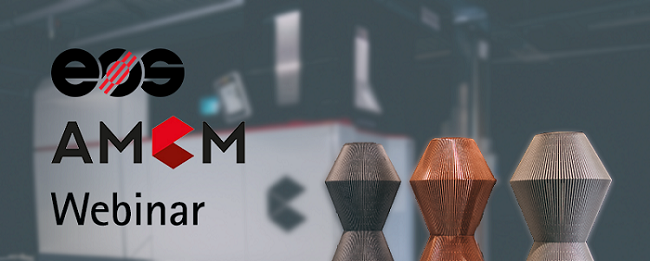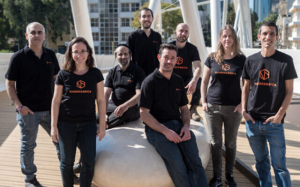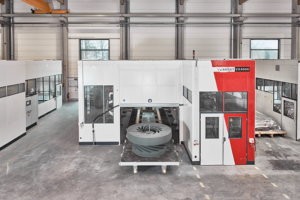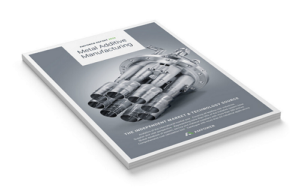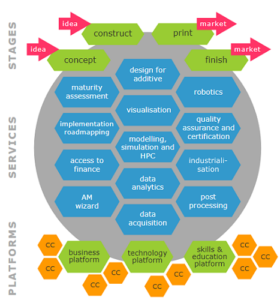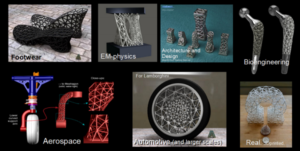We’ve got three upcoming webinars to tell you about in this week’s roundup, with two taking place at the same time on June 24th. The first one is focused on metal 3D printing, while the second is about how to use the technology to unlock massive value, specifically in the food and beverage manufacturing sector. Finally, Stratasys is holding the first of two webinars about aerospace 3D printing on June 25th.
BIG 3D Metal Printing Webinar
This Wednesday, June 24th, at 11 am EDT, EOS North America and Additive Manufacturing Customized Machines (AMCM) are hosting the free “BIG 3D Metal Printing” webinar, focusing on how technology advancements in additive manufacturing are driving applications in commercial space hardware. In this one-hour course, attendees will learn why metal 3D printing is more accessible, what DMLS technology is, what materials can be leveraged, and how customized 3D printing is continuing to advance. The speakers – Martin Bullemer, Managing Director of AMCM; Dr. Ankit Saharan, Manager of Research and Applications Development at EOS North America; and Graham Warwick, Aviation Week’s Executive Editor for Technology – will discuss what metal 3D printing is truly capable of creating.
“The challenges of fast development and innovation have lessened because of industrial metal 3D printing (additive manufacturing, or AM). Whether propulsion, structural, or integrated componentry, AM is accelerating the latest space race.
“Now, AM is moving quickly to meet even greater requirements—such as fully 3D printed combustion chambers with high-performance features, lighter weight structural components, or even fully 3D printed satellites. The latest advancement? Fully printed 3D components up to one (1) meter tall.”
Register for the free webinar here.
3D Printing for Food and Beverage Manufacturers
Ultimaker is also holding a free webinar at 11 am EDT this Wednesday, titled “3D printing for food and beverage manufacturers.” If you don’t want to miss either one, you also have the option of attending the first broadcast session of this webinar at 5 am EDT. Even if you’re not in the food and beverage industry, this 50-minute webinar could still be useful, as the company “will be revealing some of the best ideas and strategies that we use to help our biggest customers unlock massive value with 3D printing.”
Ultimaker’s Director of Community Development, Matt Griffin, and Application Engineer, Jeremy Evers, will discuss which AM applications in this industry are currently working, and how to use the technology to achieve excellent results, such as reduced costs, increased line uptime, and optimized efficiency. During the webinar, they will give examples of industry-proven applications that have saved Ultimaker customers a lot of money, provide two sample criteria that the company’s application engineers use to determine which applications can achieve the largest ROI, discuss the future of 3D printing in the food and beverage industry in a post-coronavirus market, and more. Additionally, attendees will have the chance to participate in a live Q&A afterwards. Register here.
Stratasys Aerospace Webinar Series
This Thursday, June 25th, at 10 am EDT, Stratasys will be hosting the first in its new aerospace webinar series, titled “Challenges Of Manufacturing Aircraft Production Parts.” Niccolò Giannelli, Aerospace Application and Account Manager EMEA for Stratasys, will speak during this hour-long webinar about how certifying 3D printed aircraft parts for installation is easier with the company’s Aircraft Interiors Solution (AIS).
Some of the topics to be discussed in this first webinar include the value of both Stratasys’ AM solution and additive manufacturing for aircraft production parts, what comes in the Stratasys AIS package, and the improved performance of airline companies after they’ve implemented the Stratasys Aircraft Interiors Solution. Register here. The next webinar in this series will be held on June 30th.
The post 3D Printing Webinar and Virtual Event Roundup, June 23, 2020 appeared first on 3DPrint.com | The Voice of 3D Printing / Additive Manufacturing.

